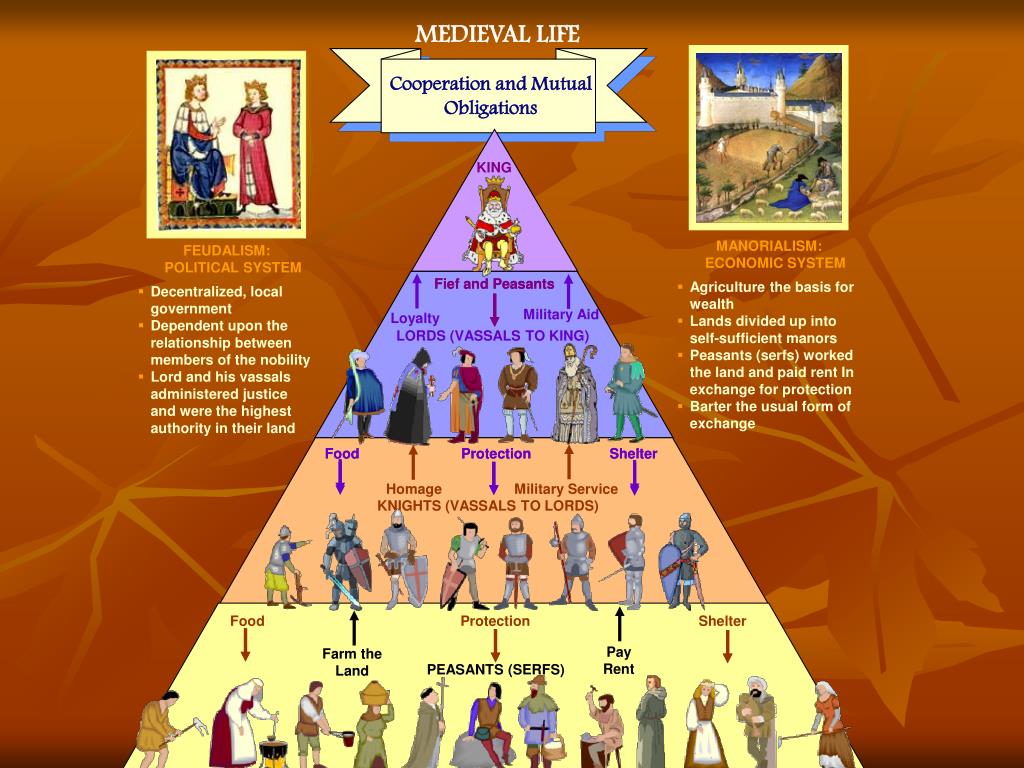


The idea of kingship never entirely vanished, but the government and the administration of justice came to be exercised by various local authorities who had connections with the king.The processes were accelerated during the break-up of the Carolingian empire in the 9th century, when men looked in vain to weak central governments for protection and leadership, and turned instead to powerful local magnates, becoming their vassals and holding their lands as fiefs for them.Holding court for his tenants and vassals.Thus, the lord of the land came to exercise the following public functions:.Private jurisdictions developed as the early Frankish rulers gave grants of immunity to various monasteries and laymen, by which the king’s officials were excluded from their lands.Their holders became his vassals and were thus enabled to support themselves as mounted and heavily armed fighting men during wars.An important step towards feudalism was taken by the Frankish king Charles Martel in the 8th century, in creating numerous military fiefs from lands which he took from the Church.

The relations of personal dependency between lord and vassal, known as vassalage, was more and more associated with rights of land, termed the fief.In a predominantly agrarian economy, rights to land became the basis of wealth and power.These relationships probably continued after the use of the Germanic kingdoms on the ruins of the Roman Empire in the West.Small farmers found it impossible to compete with the great estates, and many commended themselves to powerful landlords, giving up their lands and receiving back the right of their use under the lords’ protection.During the economic and political decay of the later Roman Empire, clientage was often linked with landholding.But this involved a definitely inferior status on the part of the client, and it was thus unlike the honourable relationship of vassalage which became a part of feudalism.The Romans had long known a somewhat similar arrangement, in which clients commended themselves to a powerful patron, giving personal devotion in return for subsistence and protection.In return, the chieftain looked after their welfare, gave them leadership, provided food, shelter and entertainment in times of peace. The companions followed their chieftain into battle, having sworn to fight to the death in support of him.
DEFINITION OF FEUDALISM IN THE MIDDLE AGES FREE


 0 kommentar(er)
0 kommentar(er)
